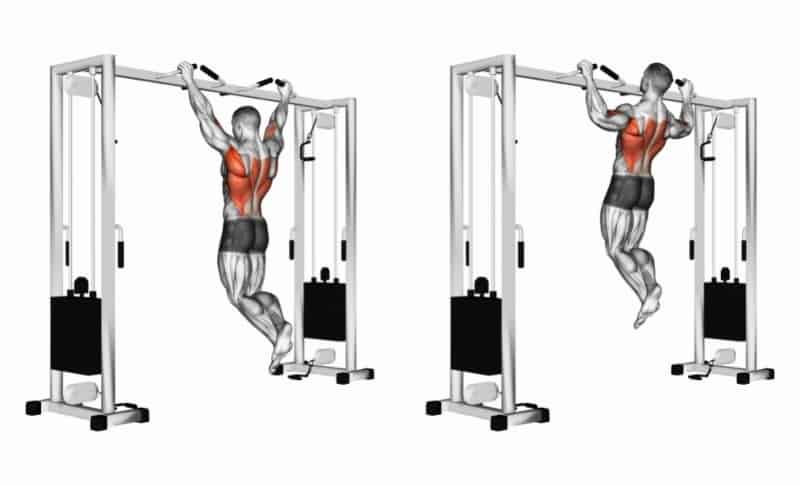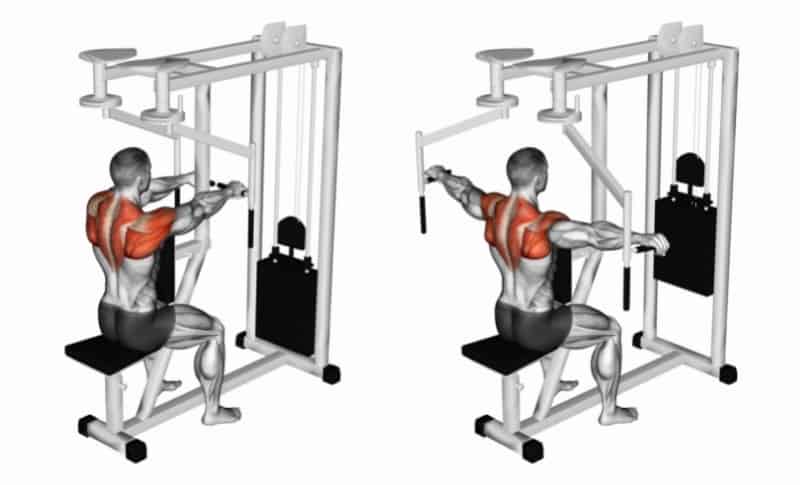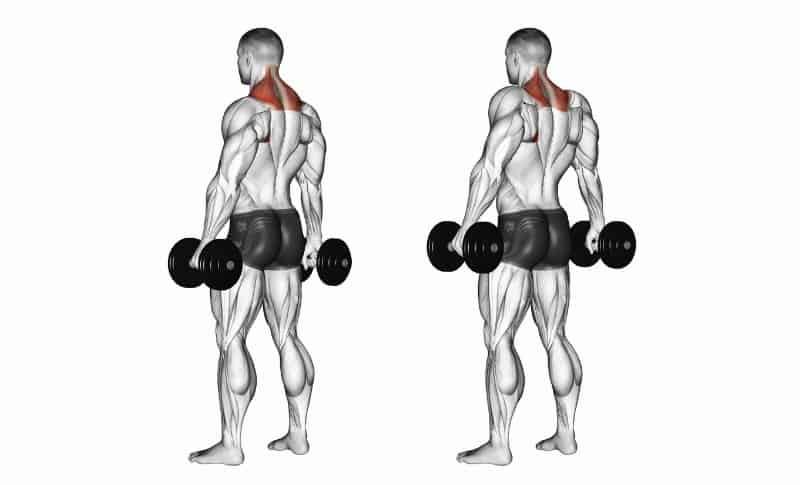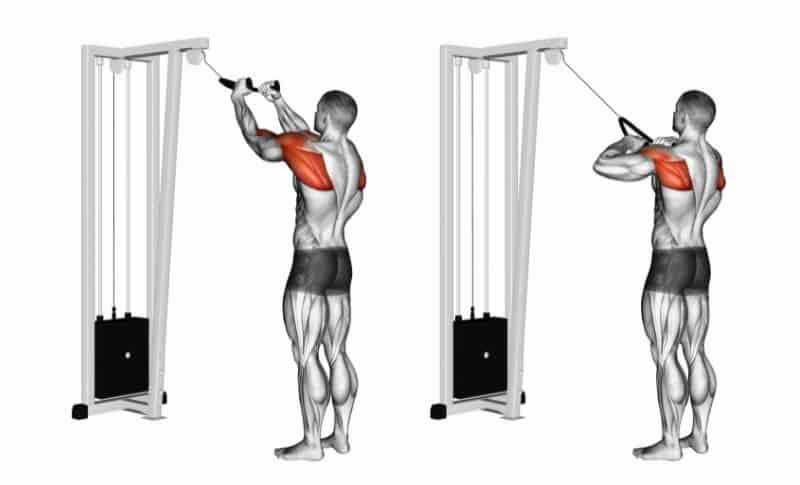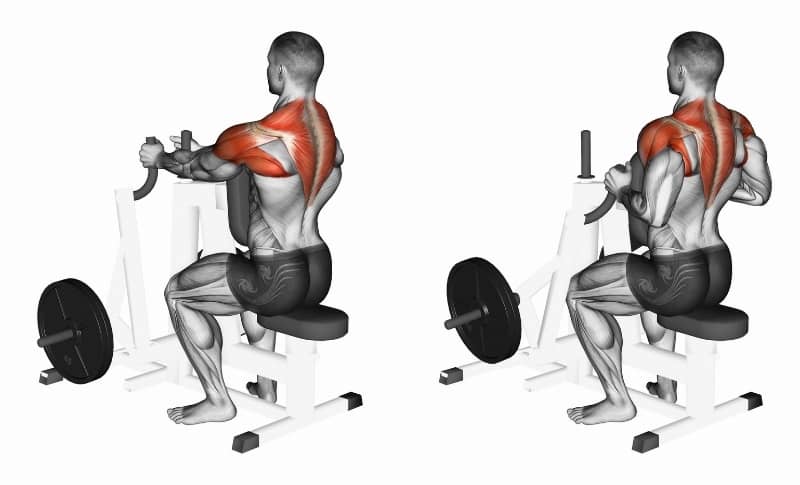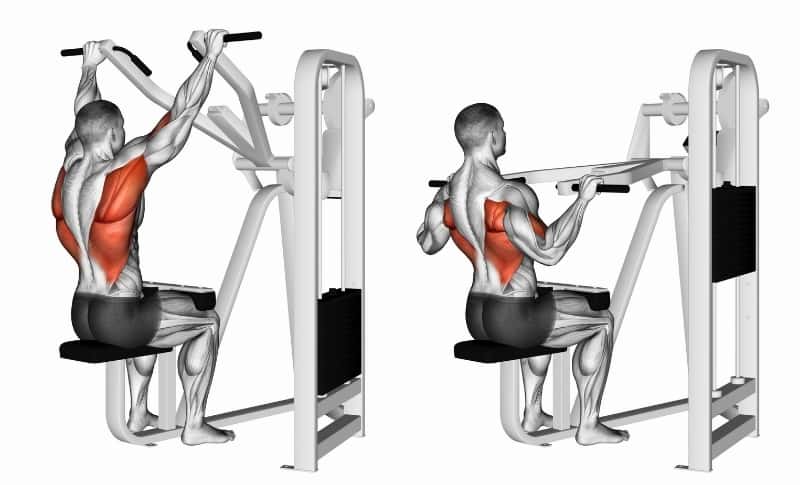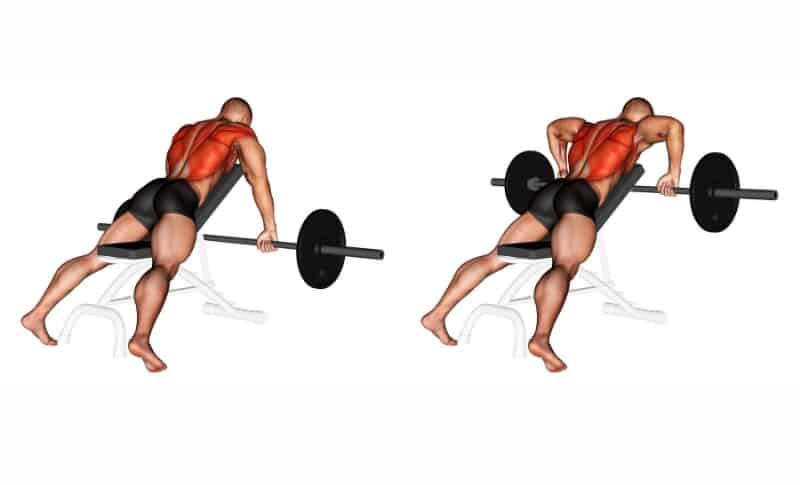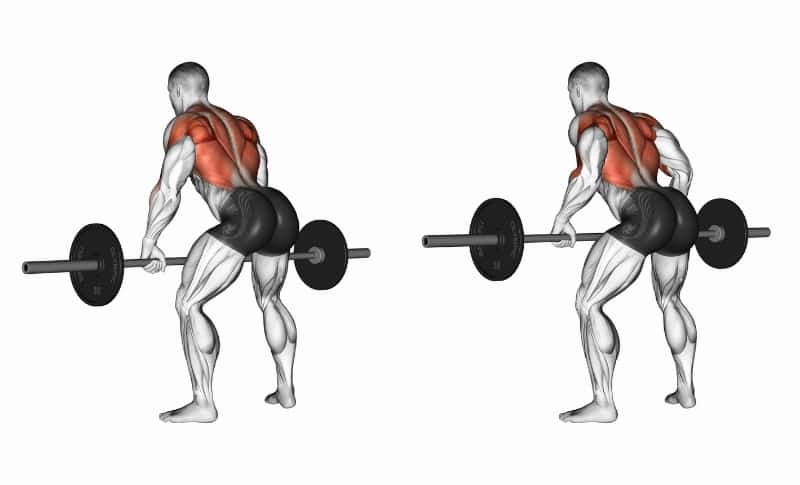Training
The 10 Best Upper Back Exercises
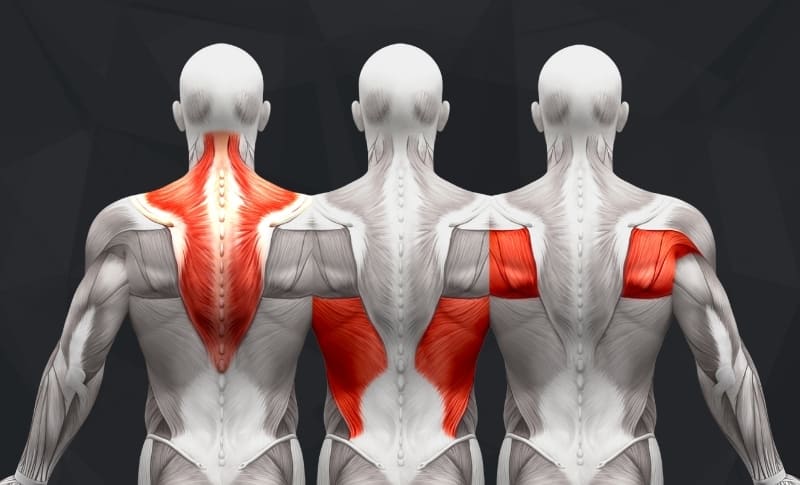
What are the best upper back exercises?
The best upper back exercises not only help develop stronger, healthier back muscles but also deliver greater support for your spine while improving overall posture and reducing the risk of injuries.
This guide explores the best upper back exercises you can include in your workouts.
Whether you’re looking to improve your core stability or provide extra support for developing hench shoulders, these upper back workouts will help you achieve your goals.
The Best Upper Back Exercises
Our exercise lists are created by determining the best exercises for muscle growth, core strength, and overall health and well-being.
Here’s our list of the 10 best upper back exercises:
10. Renegade Rows
Great for:
Renegade rows are a great way to strengthen both your upper back and your rotator cuff muscles.
It’s a low-risk exercise ideal for those newer to training, delivering full-body engagement while also working the rhomboids in the back.
How to do it:
Here’s how to perform renegade rows:
- Take a pair of light dumbbells and get on the floor in the starting position for a press up, supporting your weight on the dumbbells
- Brace your core, then raise one of the dumbbells up towards your side
- Make sure your body is in the same upright position as you perform this move
- Lower the dumbbell back to the floor, then repeat with the other hand
Why:
Renegade rows deliver in both respects if you want to combine a strong core workout with upper back development.
This exercise also aids muscle growth in the shoulder blades and triceps, while the plank-like nature of the body improves balance and stability.
When:
Use renegade rows as part of your full body and core workout sessions, and schedule these for 2-3 times per week.
Just make sure you get the form correct first, then you can progress to heavier weights and more sets and reps.
9. Pull-Ups
Great for:
A staple bodyweight exercise, pull-ups, can be performed with limited means, but the results impact muscles throughout the body.
Biceps, triceps, shoulders, and core all get a workout, and of course, your upper back will gain a lot from regular pull-ups
How to do it:
Pull-ups are easy to perform. Here’s how:
- Stand below a pull-up bar and grab it with both hands using an overhand grip, with your hands slightly wider than your shoulder blades
- Take a breath, then hang from the bar with your feet raised slightly and crossed
- Engage your back and arm muscles, then pull yourself up towards the bar until your chin is slightly over the bar
- Lower yourself down in a controlled motion, back to the starting position
Why:
As well as strengthening your back, pull-ups will improve grip strength while strengthening the arm and shoulder muscles.
It’s also good for improving overall fitness and enhancing bone strength.
When:
Pull-ups engage a lot of muscles, so make sure you include 24-48 hours rest between any heavy sessions.
If you’re performing assisted pull-ups, you can include these more frequently, and we recommend beginning with this method before committing to full bodyweight pull-ups.
8. Reverse Flyes
Great for:
Reverse flyes are perfect for really targeting the upper back muscles, so they get a thorough workout.
While focusing on the rhomboid muscles, reverse flyes help you gain strength in your shoulders by providing a solid foundation of support.
How to do it:
To perform reverse flyes:
- Lie on your front on a bench set with the back inclined
- Holding a dumbbell in each hand, support your weight on the balls of your feet
- Let the dumbbells hang straight from your shoulders with your palms facing inwards
- With a slight bend in your elbows, raise the dumbbells out to the sides, so they are in line with your body
- Slowly lower them down to the starting position, maintaining the bend in your elbows and controlling the descent
Why:
Reverse flyes impact not only the rhomboids but also your posterior muscles, making them an invaluable exercise for developing strength and avoiding back injuries.
The trapezius and latissimus dorsi are also worked, leading to better posture and core strength.
When:
This exercise is best done 2-3 times per week, gradually increasing the weight as you become more comfortable with your form.
7. Shrugs
Great for:
Back and shoulder muscles are intimately linked with one another, and shrugs give both of these crucial upper body muscle groups a good workout.
Neck and rotator cuff muscles are also engaged, and they’ll help give them better definition as well.
How to do it:
To perform shrugs:
- Hold the dumbbells down to your side with palms facing inwards
- Bring the weights up, keeping your arms to your side and lifting with your shoulder blades and rotator cuffs
- Lower the weights back to the start position
Why:
While shrugs are often primarily thought of as exercises for traps, they also hit back muscles and deliver the goods if you’re looking to build mass here.
Make sure your form is correct before moving to heavier weights, as there’s a risk here of impacting the neck muscles and causing strain.
When:
Provided you’re comfortable with the weights you’re using; you can include shrugs 3-4 times per week.
They’re excellent exercises to include on days when you really want to target your back and shoulders to build upper body strength.
6. Face Pulls
Great for:
Cable exercises are a safer way to target various muscle groups without putting too much strain on them, and face pulls help you develop back strength without risking injury,
They also help to develop strength and flexibility in your shoulder joints.
How to do it:
Find a cable machine with the weights and cable up in a high position, then:
- Take the cable rope in both hands, thumbs pointing backward
- Keep your elbows below your shoulders, then turn your hands slightly as you pull the cable towards you
- Finish pulling with your hands to the side of your face so that your upper back muscles are engaged with the exercise
- Guide the cable back to the starting position
Why:
Increased upper back strength, as well as the posterior deltoids (rear delts) and rotator cuff muscles, are all engaged with face pulls.
They also help improve posture and give your overall upper body greater symmetry.
When:
Include face pulls on days where you want to develop your back and shoulder muscles to get a better all-round upper body workout.
5. Seated Rows
Great for:
Seated rows are another great way to build muscles with a low-risk upper back workout.
They activate a range of muscle groups, predominantly throughout the back, such as the rhomboids and latissimus dorsi.
How to do it:
To perform seated rows:
- Sit on the row bench with your feet on the rests and knees slightly bent
- Take the cable in both hands with your palms facing inwards
- Start with your arms completely outstretched, your back neutral, and your chest elevated
- Engage your core, then pull the cable towards your body, stopping just below the naval
- With a controlled motion, return the cable to the starting position with your arms fully extended
Why:
Developing a range of back muscles is advantageous to getting gains throughout the upper body.
Seated rows help build strength throughout this region of muscles and muscles on the outer side of the chest wall, bringing improvements in strength and stability.
When:
Include seated rows on back days and sessions where you’re looking for a good full-body workout.
Start off using lower weights to make sure your form and posture are correct, increasing the weights as your proficiency increases.
4. Lat Pulldowns
Great for:
This variation on the seated row involves a similar motion but pulling vertically rather than horizontally.
This exercise strengthens the latissimus dorsi, the largest muscle in your back, improving posture and spinal stability.
How to do it:
You can perform lat pulldowns the following way:
- Sit on the pulldown machine with your thighs tucked underneath the pad support
- Take the bar overhead with a wide grip, facing forwards with your back and core engaged
- Pull back your shoulder blades, then pull the bar down until it reaches your upper chest
- Squeeze your lats in this position, avoiding leaning backward as you do so
- Return the bar to the starting position slowly
Why:
Another safer way to exercise your upper back muscles, lat pulldowns also work your rear delts for better back definition.
Arm muscles are also engaged with lat pulldowns, delivering a nice all-around workout for a range of upper body muscles.
When:
One of the best exercises for the upper back, using cables for lat pulldowns, means you can push heavy weights without placing undue strain on those muscles.
2-3 times per week is a good frequency to aim for, with 3 sets including 10-15 reps for each session.
3. Seal Rows
Note: The illustration above shows an incline bench position. Try to keep the bench horizontal.
Great for:
By using your chest to provide support, seal rows make sure all the effort is placed on your back, shoulders, and arms.
Mid-back and latissimus dorsi muscles are effectively engaged without risk of strain or injury.
How to do it:
Start by setting up a bench in the horizontal position, then take two dumbbells:
- Lie on the bench on your front with the barbells on the floor beneath you
- Grip the barbells with palms facing inwards
- Pull the dumbbells up towards your body, coming to a stop at the side of your chest
- With control, lower the dumbbells back down to the floor
Why:
Lats, traps, and rear deltoids are all given a thorough workout with seal rows without the option of cheating by using momentum.
It’s a unique exercise that works towards building both definition and strength in the upper back.
When:
One of the most underrated exercises for developing back muscles, seal rows can be included in any back session for additional gains.
2. Single-Arm Dumbbell Rows
Great for:
This excellent exercise builds strong upper back muscles and helps build bigger, more defined arm muscles as well.
This combination of upper and lower back engagement along with the arms works towards improving your core stability.
How to do it:
Grab a bench set in the horizontal position, then:
- Put your left leg on the bench and support your weight with your left hand, placing your left knee on the bench
- With a dumbbell on the floor to the side of the bench, reach down and take this with your right hand
- With your upper body parallel to the ground, pull the dumbbell up towards your chest, making sure you engage your upper back as you do so
- Squeeze your shoulder and back muscles at the top, then slowly lower the dumbbell back to the starting position
Why:
Since single-arm dumbbell rows work a wide range of upper body muscles, they are great for including in full-body workouts.
Perfecting this exercise will help with lifting in your daily life, instilling good form, and building up muscles around your back and core.
When:
Perform single-arm dumbbell rows in your core and back workouts, with the appropriate rest period between sessions.
3-4 sets including 8-10 repetitions for each arm is a good standard to aim for, increasing weights over time.
1. Barbell Bent-Over Rows
Great for:
Barbell bent-over rows are among the very best strength exercises, delivering an intense workout for a range of muscles throughout the upper back.
Forearm and bicep muscles are also engaged, while overall grip strength also reaps rewards.
How to do it:
To experience noticeable gains in your upper back, follow these instructions:
- Load a barbell and stand with your feet shoulder-width apart and knees slightly bent
- Lean forward from the waist, then take the bar with your back straight and neck and spine aligned
- Bracing your shoulder blades and engaging your core, pull the bar up towards your body until it touches your sternum. Make sure your back is still straight
- Lower the barbell back towards the starting position, keeping all muscles engaged in the process
Why:
This multi-jointed workout hits a range of muscles, including hamstrings, glutes, lats, and upper and lower back muscles.
It also assists with stability while strengthening your overall core and improving balance.
When:
Once the form has been mastered, include this exercise 2-3 times per week as part of back-heavy or comprehensive full-body sessions to help develop strong upper back muscles.
FAQs About Upper Back Exercises
Still unsure which are the best exercises for your upper back, and why you should include these in your workouts?
Check out our answers to these FAQs for more useful information.
Q: Why is upper back training important?
Back pain can have severe consequences if it isn’t addressed, and upper back training is one of the best things you can do to avoid these health problems.
Strong upper back muscles help to brace the spine and deliver a better overall posture.
Q: What are upper back muscles used for?
There are a variety of core muscles located in the back, including the trapezius, rhomboid, and latissimus dorsi.
These muscles form a range of functions, from assisting with posture and balance to supporting shoulder muscles and alleviating tension in the neck.
Q: What causes weak upper back muscles?
Poor posture from sitting at a desk several hours per day and lifting objects without the correct form can weaken muscles in the upper back.
Failure to address weak upper back muscles can lead to more serious health issues, for instance, upper crossed syndrome.
Q: How do I make my upper back stronger?
Including some of the exercises outlined in this guide is a great first step towards strengthening your upper back.
While you may experience discomfort when first starting out, persevere and become confident with your form, and you’ll soon see the benefits.
Q: How can I make my upper back thicker?
When building a thicker back, try to include a broad selection of back muscle exercises, so each muscle group gets attention.
Switch between the various workouts outlined above, so your traps, lats, and rhomboids all get engaged at different times.
Summary
A strong upper back provides the support necessary for gains in shoulders and other upper body muscles.
This guide to the best upper back exercises should help you develop these muscles safely and effectively, with minimal risk of strains and injuries.
Here’s a quick recap of the 10 best upper back exercises:
- Barbell Bent-Over Rows
- Single-Arm Dumbbell Rows
- Seal Rows
- Lat Pulldowns
- Seated Rows
- Face Pulls
- Shrugs
- Reverse Flyes
- Pull-Ups
- Renegade Rows
If you enjoyed this article, check out some of our other exercise lists:
- The 10 Best Lower Chest Exercises
- The 10 Best Upper Chest Exercises
- The 10 Best Lower Back Exercises
- The 10 Best Scapular Exercises

